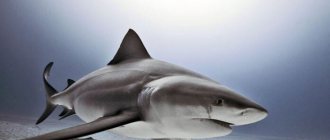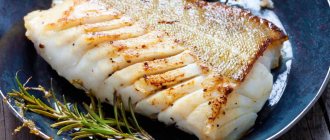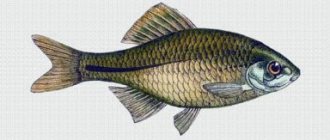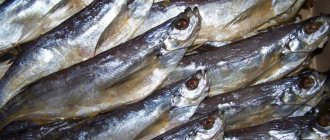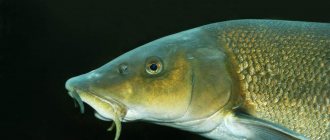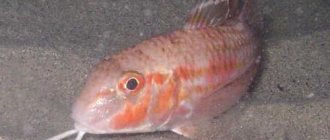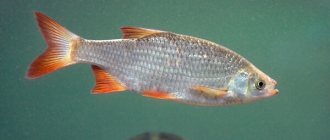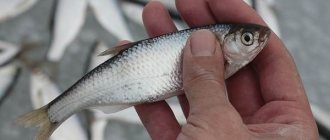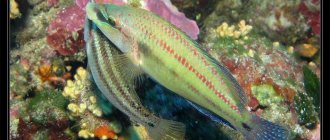An aquarium is a great opportunity to observe the life of underwater inhabitants without leaving home. Aquarium fish can live in salt and fresh water, depending on their natural habitat. Among freshwater aquarium fish, there are many species that can delight the eye with a variety of colors and shapes. We will list the most popular types of fish that live in fresh water bodies, tell you about their characteristics and conditions of detention. The article also presents photos of freshwater aquarium fish.
General information
According to research, freshwater fish account for 90% of all aquarium fish sales in the world. They are caught in rivers, lakes, swamps and artificial reservoirs. About 40% of the Earth's fish species live in fresh water bodies. About 20% of freshwater fish species are threatened with extinction or have already disappeared. This is due to the destruction of the number of reservoirs in which fish species found only in this area were found. The reason for this is the drainage of water bodies, the development of large areas and environmental pollution. Some species of freshwater fish are presented only in private aquariums, but in nature they have completely disappeared. In addition, there are species of fish bred in captivity as a result of human selection. They are also not found in nature, but are quite popular in home aquariums.
There are about 4 thousand species of freshwater aquarium fish on the market. The most popular are carp-like species and cichlids. Carp fish are not only kept in decorative aquariums, but are also eaten. Cichlids are the largest family of freshwater fish, and it includes 2,400 species. Next, we will find out the names and get acquainted with the description of freshwater aquarium fish, which are the most popular among aquarists. Let's consider the conditions of their detention.
What does the common pike eat?
Its main diet is based on representatives of various species of fish. For example, they are happy to attack:
- perch;
- ruffs;
- minnows;
- white breams;
- minnows;
- silver bream;
- loaches;
- sculpin gobies.
When asked about which fish eats which, avid fishermen say that what comes to mind is the pike, which happily eats roach. This is understandable: the fact is that pike is the unspoken symbol of all river predators in our country, and roach is its favorite food.
Ichthyologists describe cases when these fish grabbed and pulled mice, rats, small ducklings, waders and even squirrels into the water! All these animals swam across fresh water bodies during their seasonal migrations. Large individuals can generally attack adult ducks, especially during their molting period. In the spring and early summer season, pike readily feed on crayfish and frogs. By the way, the victim of a pike can often be a fish that is almost twice the size of the predator itself!
Goldfish
Goldfish are perhaps the most popular type of aquarium fish. They are very easy to maintain, hardy, and forgive the mistakes of beginners. At the same time, they delight their eyes with gold-shimmering scales. These fish can withstand water temperatures from 3 to 30 degrees. With proper care, they can live for about 30 years.
Goldfish sizes range from 8 to 13 cm, although larger varieties exist. An aquarium for one fish must be at least 80 liters. For each subsequent individual, the volume should increase by 40 liters. It is necessary to change the water regularly and use only high-quality feed. Goldfish eat ready-made, live and freeze-dried food.
Goldfish are quite friendly, however they can be attacked by other types of fish. Cardinals get along best in the same aquarium with them.
Danio Rerio
Danio Rerio (or Danio Zebra) is a hardy and unusual freshwater aquarium fish. It easily adapts to a wide range of water parameters, so it can be recommended for beginners.
Danio rerio are active and fearless fish. They can be housed with more timid species. Danio Rerio, by their example, can show their neighbors that there is no need to be afraid or hide. These are schooling fish, which for a comfortable existence should be kept in a group of at least 6 individuals. Females are larger than males, but males differ in color: they have larger stripes on their bodies and are brighter yellow.
The fish can grow up to 5 cm. They live for about 2-5 years. The temperature for them should be kept in the range of 18-24 degrees. These fish are easy to breed. The size of the aquarium for them should be at least 40 liters. You can feed your fish flakes, live and frozen food.
Blue neon
Neon blue is a capricious and beautiful aquarium freshwater fish. These are schooling fish: it is advisable to keep at least six individuals in one aquarium. The minimum volume of the aquarium is 50 liters.
When moving into an aquarium, you need to pay close attention to proper acclimatization. It should happen more slowly than for other species, because blue neons are very sensitive to sudden changes in conditions. It is important to change the water on time, monitor acidity levels and nitrate levels.
You can feed them with live and freeze-dried food and flakes. The lifespan is 5-8 years. This is a peaceful species that can be kept with fish of approximately equal size. Big fish can eat them.
Cockerels
Bettas are popular among aquarists due to their varied colors, their huge elegant tails and unpretentiousness. These are colorful freshwater aquarium fish that are great for beginners.
Males have the brightest colors; they have much longer tails and fins. You cannot keep two males together in the same container, otherwise they will fight to the death. You can keep a male and a group of females together, as long as there is enough hiding space in the aquarium.
One cockerel can be kept in a container with a volume of 10-15 liters, fed 1-2 times a day. They are unpretentious in food and do not require expensive feed. The water in the container must be changed every 4 days.
Economic importance
In addition to the fact that this fish is quite small, it is not so easy to catch, since it spends most of its life at the bottom of the reservoir, buried in the sand. In this regard, it is not eaten, but it has a lot of positive qualities, which is why it has received great recognition. For example:
- Many anglers use it as live bait.
- The spined loach feels great in artificially created conditions.
- By pinching, you can determine atmospheric pressure. If the pressure drops, then it floats to the surface and begins to behave inappropriately.
Knowing this, many fishermen take it with them in containers when fishing. As a rule, at low pressure the fish bite poorly, or not at all.
If you keep the spined loach in an aquarium, you should remember that it does not tolerate sunlight. In such conditions, it burrows into the ground and leaves its shelter only in the evening.
Guppy
Guppies are very popular among aquarists due to their endurance and unpretentiousness. They are easy to breed at home. Males boast bright colors and large bushy tails. Females are more inconspicuous, but are larger.
Guppies are viviparous fish. The fry that the female gives birth to are often eaten by the adults, so the pregnant female should be placed in a separate container until birth. Guppies are extremely prolific fish. If you do not want to deal with fry, it is worth populating a group of individuals of the same sex into the aquarium.
The size of an adult fish is up to 5 cm, they live for about 3-5 years. The water temperature favorable for them is 19-29 degrees. Guppies are compatible with most non-aggressive fish. They need live food and should also be given flakes and freeze-dried food. The more varied the food, the more active the fish will behave, and its color will be brighter.
What is an asp: habits and habitats
According to the method of obtaining food, predatory fish are divided into “ambushers” and “hijackers”. The first ones wait in cover, the second ones rush after the victim and gradually overtake it. The asp has a light color, high fins, an insatiable appetite, endurance and agility. Constantly on the move and prefers active hunting with pursuit or a sudden attack. Often, at speed, it crashes into a school of small fish, snatches one fish and rushes on without stopping. If a school of fry comes across a school of fry, the tactics of suppression are used with several quick blows of the powerful tail, followed by eating the disoriented relatives. Thanks to its wide overhead field of view (up to 97°) and sharp vision, the predator successfully targets and catches low-flying insects by jumping high out of the water.
These features of the exterior and lifestyle served as the reason for the appearance of both the official name of the genus (the Kazakh word “zher” - to eat with greed) and many everyday names:
- sheresper - from the obsolete verb “sheresperetsya” - to puff up (about fins), to be lively;
- whitishness (whiteness) – color features: silvery-grayish sides and belly of a milky shade;
- grip - colloquial speech: reckless, dexterous, daring;
- horse (mare) - for the ability to jump high;
- sherikh, cherikh, zherikh, shereshper, shilishper are regional, distorted forms of the original name of the taxon.
The modern common nickname “river corsair” clearly indicates the fish’s attraction to the current. The asp is found only in clean rivers with a rich oxygen content, completely ignoring standing oxbow lakes, ponds and lakes. Rarely sticks to the bottom, trying to stay close to the surface. This behavior of the sheresper fish is optimal for tracking prey in all layers of the reservoir and directly above it.
The adult predator prefers solitude and jealously controls the hunting grounds, cyclically walking around them in a circle. This feature of the asp’s habits both complicates and simplifies fishing. With frequent changes of positions, the risk of unsuccessfully searching for a fishing object that is constantly moving increases. It is also ineffective to statically wait for a bite outside the personal territory of the sheresper.
To learn more:
The royal fish of the sturgeon family - sterlet
To choose the right fishing tactics and the appropriate casting distance, you will need auditory and visual observation of the surface of the reservoir. Hunting for fry and regularly jumping out for insects, the horse-fish produces a lot of noise, which makes it possible to unmistakably indicate its current location and direction of movement.
Pearl gourami
Pearl gourami has an unusual coloring: on the body of the fish you can distinguish white spots that resemble pearls. There is a dark stripe running along the entire body. Males are distinguished from females by their elongated dorsal fins. Adults can reach up to 13 cm in length.
These are quite peaceful fish, but males can fight among themselves. It is advisable to keep one male and a group of females in one aquarium. These fish reproduce quite easily. Males make nests from air bubbles and place the game there. During the breeding season, they are able to boast the most vibrant colors.
The male takes care of the fry until they learn to swim normally and get food themselves. Afterwards, the male must be removed, otherwise he may become aggressive towards the grown young animals.
Gourami are not picky about food. The minimum aquarium size for pearl gourami is 100 liters. They live in captivity for 3-4 years. This is a fairly hardy fish, making it perfect for beginners.
Kinds
There are several common fish species that have red or orange colored fins. For many of them, the shade changes depending on the reproductive cycle, living conditions and time of year. It often happens that in different places the same species of fish can have fins from gray to bright red. However, the most famous species capable of acquiring this coloration include:
Common roach
- perch;
- ide;
- roach;
- chebak;
- subdust;
- rudd;
- pike;
- asp;
- chub;
- silver bream;
- crucian carp;
- trout;
- Malma
Many anglers have noticed that the list contains fish with traditionally gray fins, but in this case it is necessary to take into account that there are different features of reservoirs, as well as representatives of the ichthyofauna. A striking example is the crucian carp - in most representatives of the species, all fins are colored dark. However, golden carp has a color similar to an aquarium fish - its scales are bright yellow and its fins are deep red.
The color of the fins of this species of crucian carp can vary from dark red to brown, but it is worth noting that the shade of its scales can also change depending on the living conditions of a particular specimen.
This fish is found much less frequently than its silvery counterpart, and it is reluctant to bite on classic tackle, which is why not everyone knows about this variant of its color. Other types, in turn, are worth considering in more detail.
Perch
This predatory species has one of the brightest colors among commonly encountered freshwater fish. Its body is yellowish-green and covered with vertical black or dark green stripes. Its dorsal fin is usually gray or brown, but the rest are bright red or orange.
Typically, medium-sized individuals have the brightest fin color, since as this fish ages, it becomes increasingly dull, but there are exceptions.
This color is a kind of war paint for the perch - after all, it is a predator, which means it does not need to camouflage or hide so as not to be eaten. This fish lives everywhere in fresh water bodies, living, for the most part, in schools, in different seasons either going out to coastal shallow waters, or vice versa - descending into deep holes. It is caught mainly with spinning rods, but does not refuse animal baits, presented using a float or bottom rig.
Botia marble
Marbled botia is a tenacious and friendly fish that can easily get along with other non-aggressive species. These fish can reach a size of up to 10-15 cm, they live from 6 to 16 years.
Marbled bots have a light body color with dark stripes. The optimal water temperature for them is 23-28 degrees. These are active fish that should be kept in groups of 4-5 individuals.
The fish do not show aggression, therefore they are safe for other aquarium inhabitants, although they can disturb shy and slow fish with their activity. Marbled bots are quite voracious. They eat both plant and animal foods. It is advisable to give a varied diet, this way you can achieve the brightest color and greater activity. They are able to feast on small snails, so it is worth abandoning such a neighborhood. Minimum aquarium size for marbled bots: 150 liters.
Thus, due to the huge diversity of species, freshwater aquarium fish are quite popular in home aquariums. Many of the species are easy to maintain and therefore suitable for beginners. We have given the names of freshwater aquarium fish, which are the most popular among aquarists. Before purchasing fish, you need to carefully study the information about proper acclimatization, because a sudden change in conditions can be fatal for many species.
Sizes and types of asp
The fish is characterized by rapid growth and impressive dimensions. Standard catches include individuals weighing 2-2.5 kg with a body length of 60 cm. Specimens weighing 4-6 kg (75-80 cm) are often encountered. But these figures are far from the maximum. The largest asp reaches a weight of 12 kg with a length of about 120 cm. The average monthly water temperature directly affects both the life expectancy and the size of the predator. In the northern regions, the age of the fish reaches 9-10 years, and it rarely grows over 7-8 kg. The warm conditions of the southern regions make it possible to fully reveal the full size and weight potential of the sheresper, which begins at 13-15 years of life.
Aral asp
Endemic to salt and fresh water bodies of Central Asia, which belongs to its own species Aspius iblioides. It forms residential and migratory forms in the remaining waters of the Aral Sea and the Syr Darya, Sarysu, Chu, and Amu Darya. They live up to 9 years. They reach a weight of 5.5-6 kg with a height of 65-70 cm. The Aral sheresper has light smoky fins and a squat body compared to the ordinary one. The eldest taxon for the species form is the red-lipped asp (Aspius taeniatus), which was also climatized in the waters and basin of the Caspian Sea (Kura, Araks, Ural, Volga). The main features of the fish’s appearance include the purple color of the mouth and all fins.
To learn more:
Pike perch: habits of sea and river species
Central Asian asp
The smallest species (Aspius vorax) inhabits the Tigris River basin in Iraq and Iran. Life expectancy is 6-7 years. The maximum weight is no more than 1.5-1.6 kg with a height of 50-55 cm. Despite the high fertility, the population of the Central Asian sheresper is constantly declining due to the constant discharge of industrial waste and wastewater into the river. Also, Turkish dams, which constantly destabilize the usual water regime of the Tigris, have a negative impact on the ichthyofauna. All this led to the inclusion of the taxon in the International Red Book.
Amur flat-headed asp
It does not belong to the genus Aspius, but forms its own monotypic species, Pseudaspius leptocephalus. It is characterized by a bottom-dwelling lifestyle, an elongated body and a low, elongated head with a flattened forehead. Lives up to 20 years and grows up to 80 cm (2-4 kg) in length. A distinctive feature is the scarlet fins, which gave the fish another popular nickname - rudd. Habitat: Amur River basin: Ussuri, Buir-Nur, Sungari, Khanka, Shilka, Onon.
